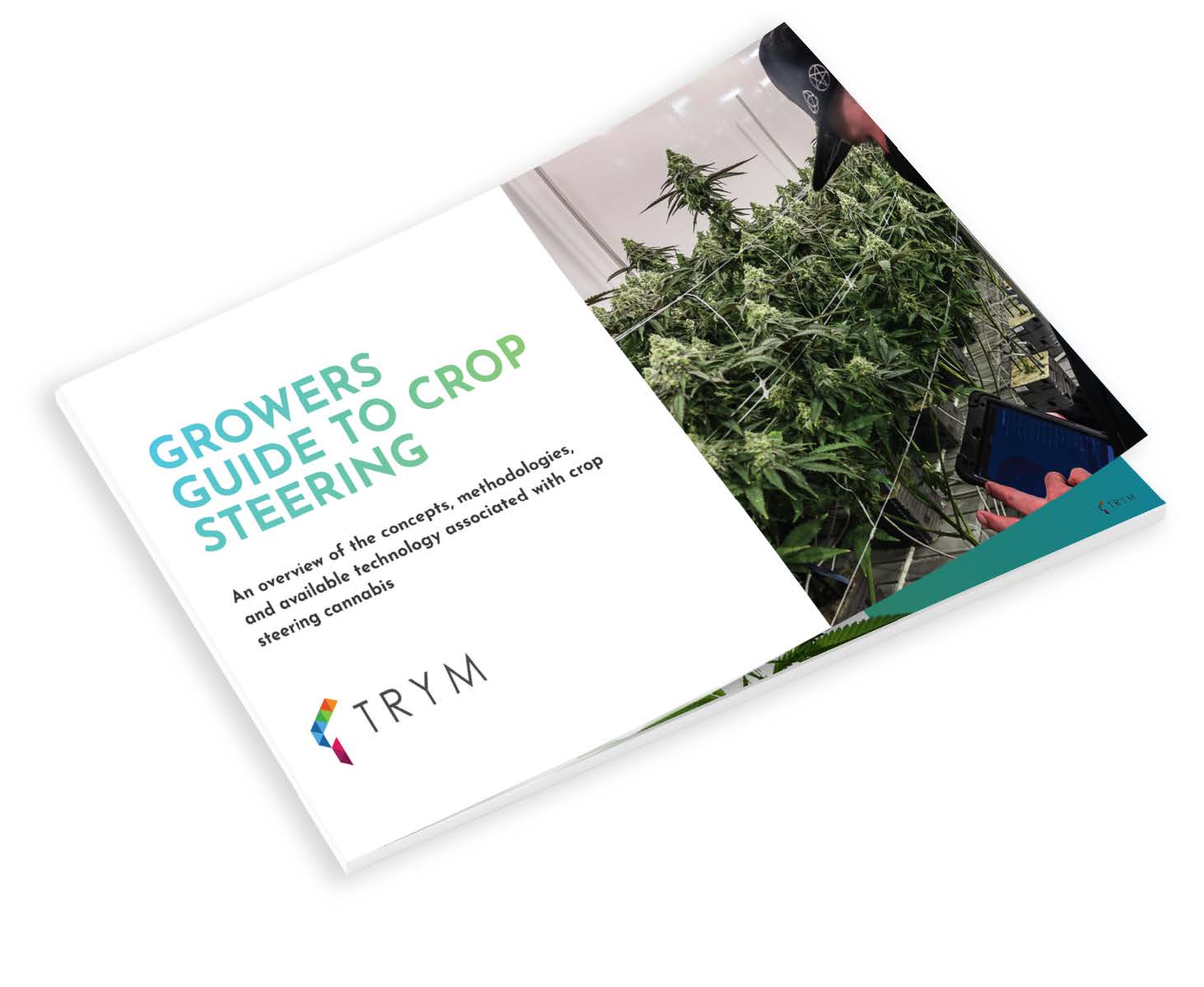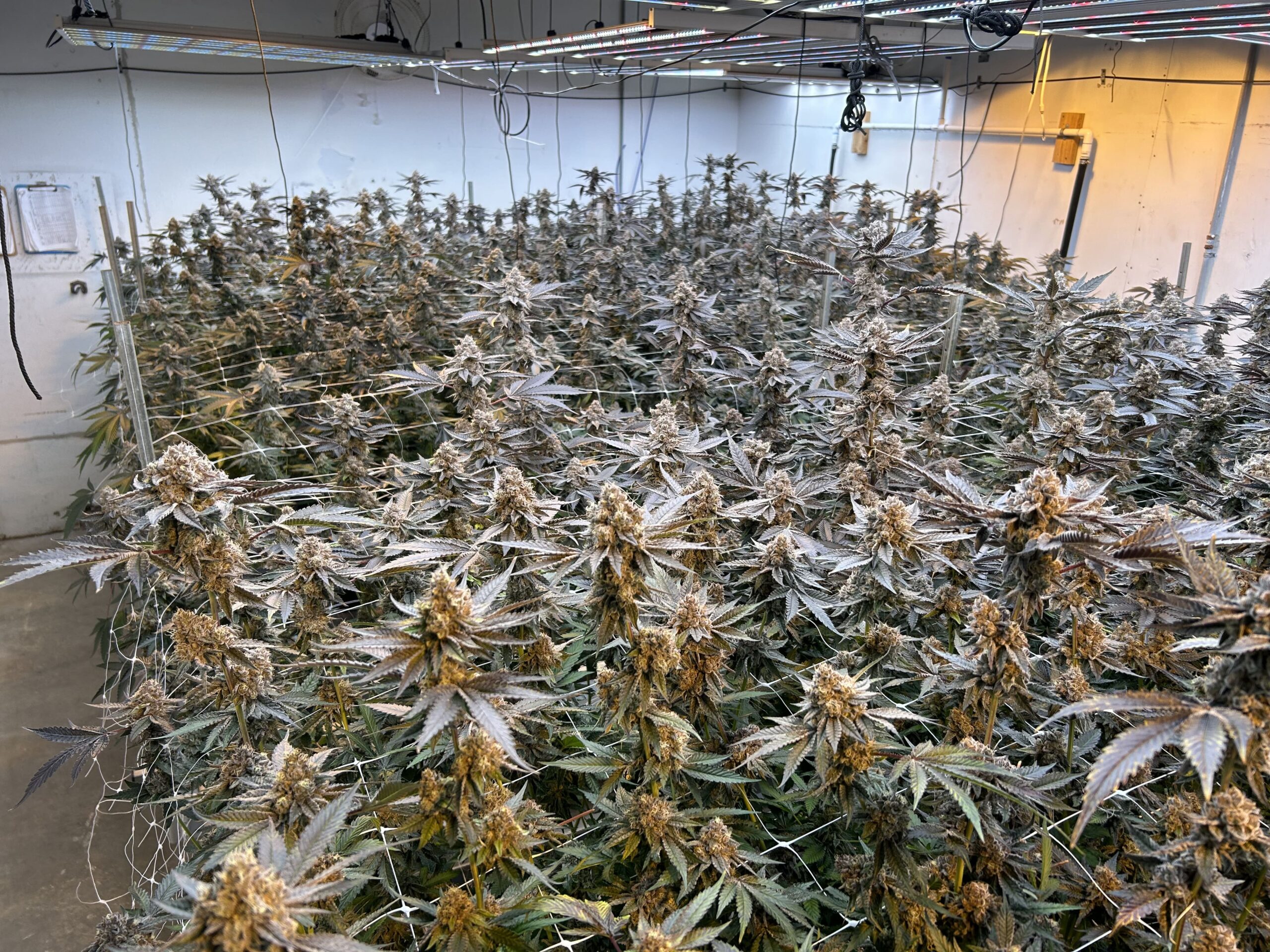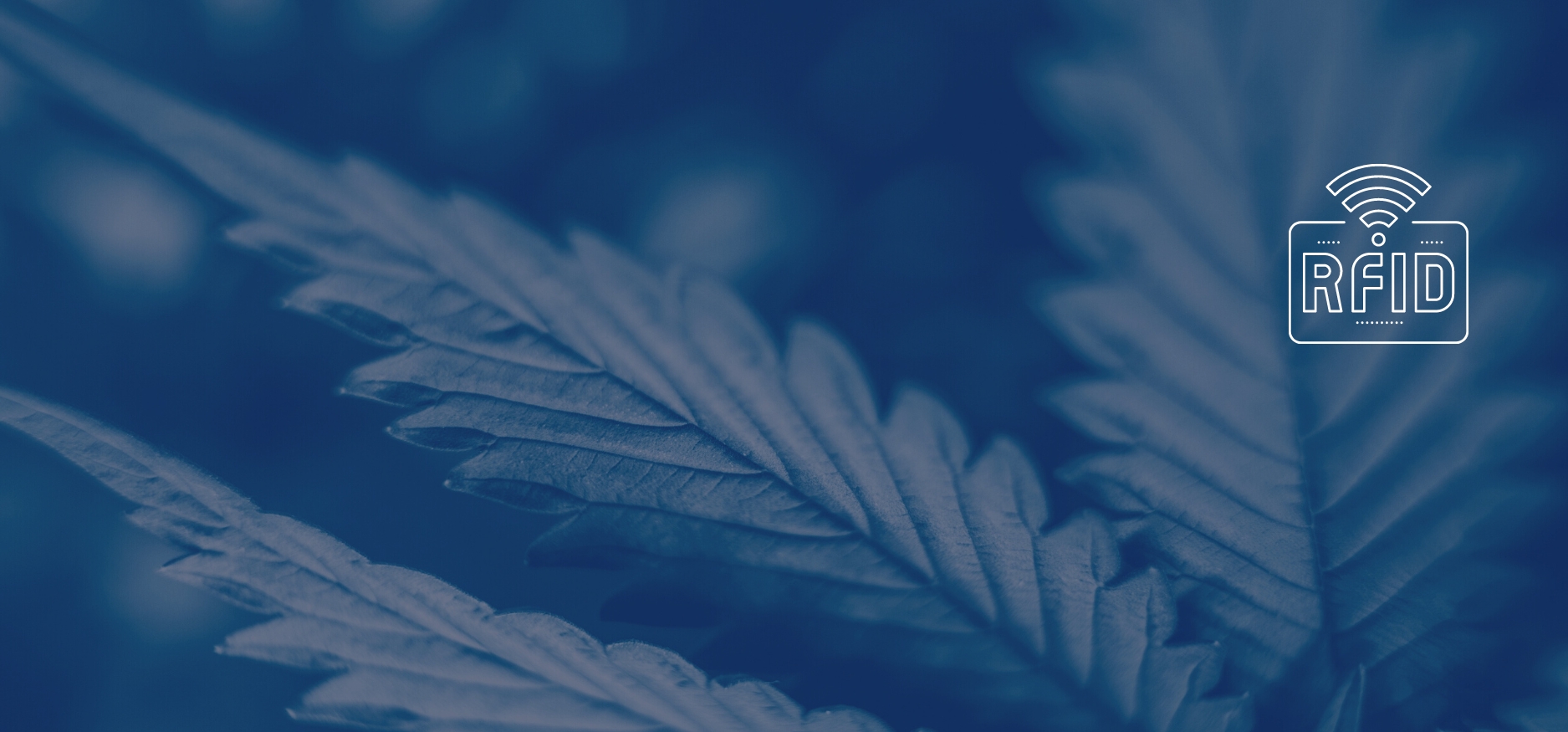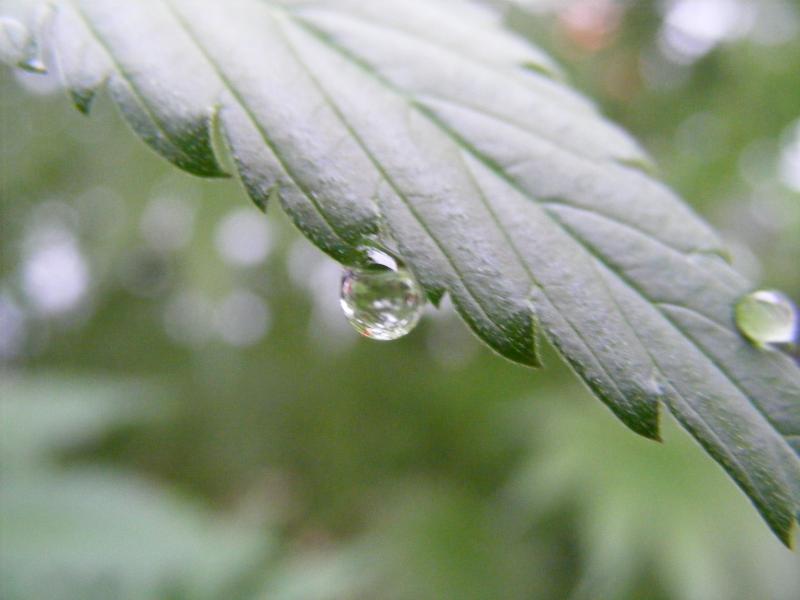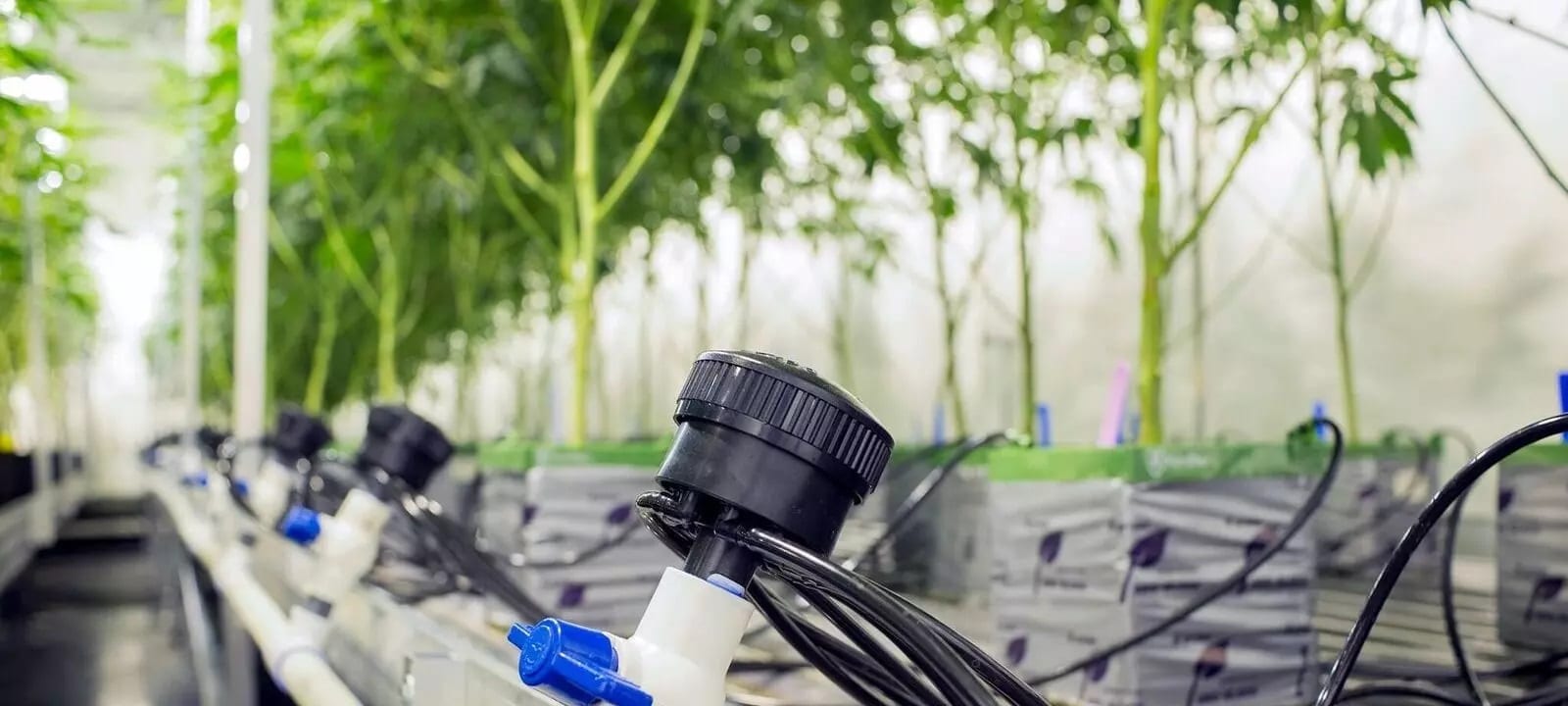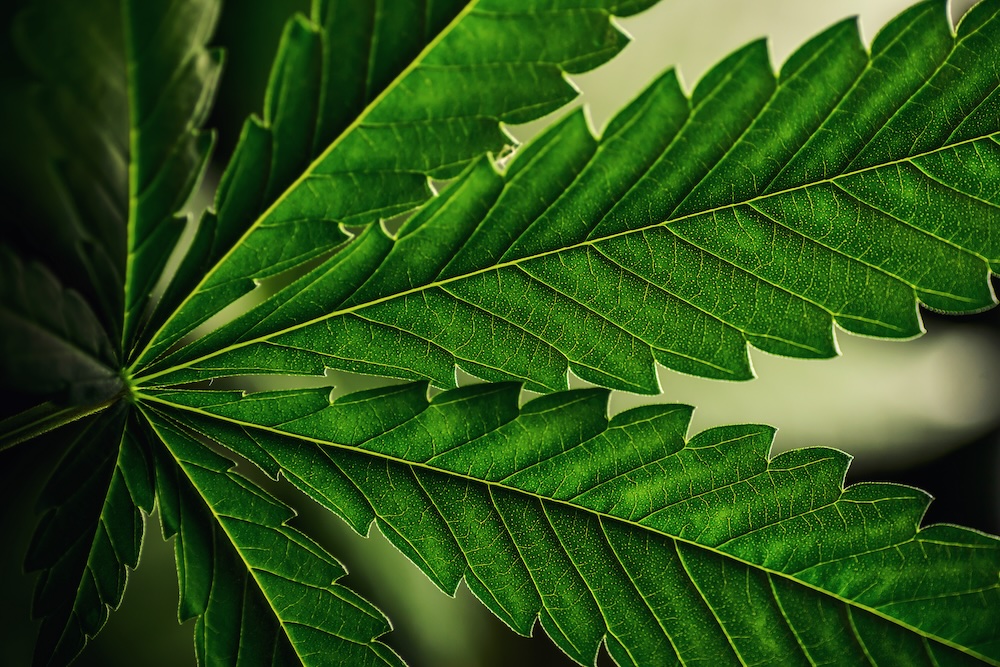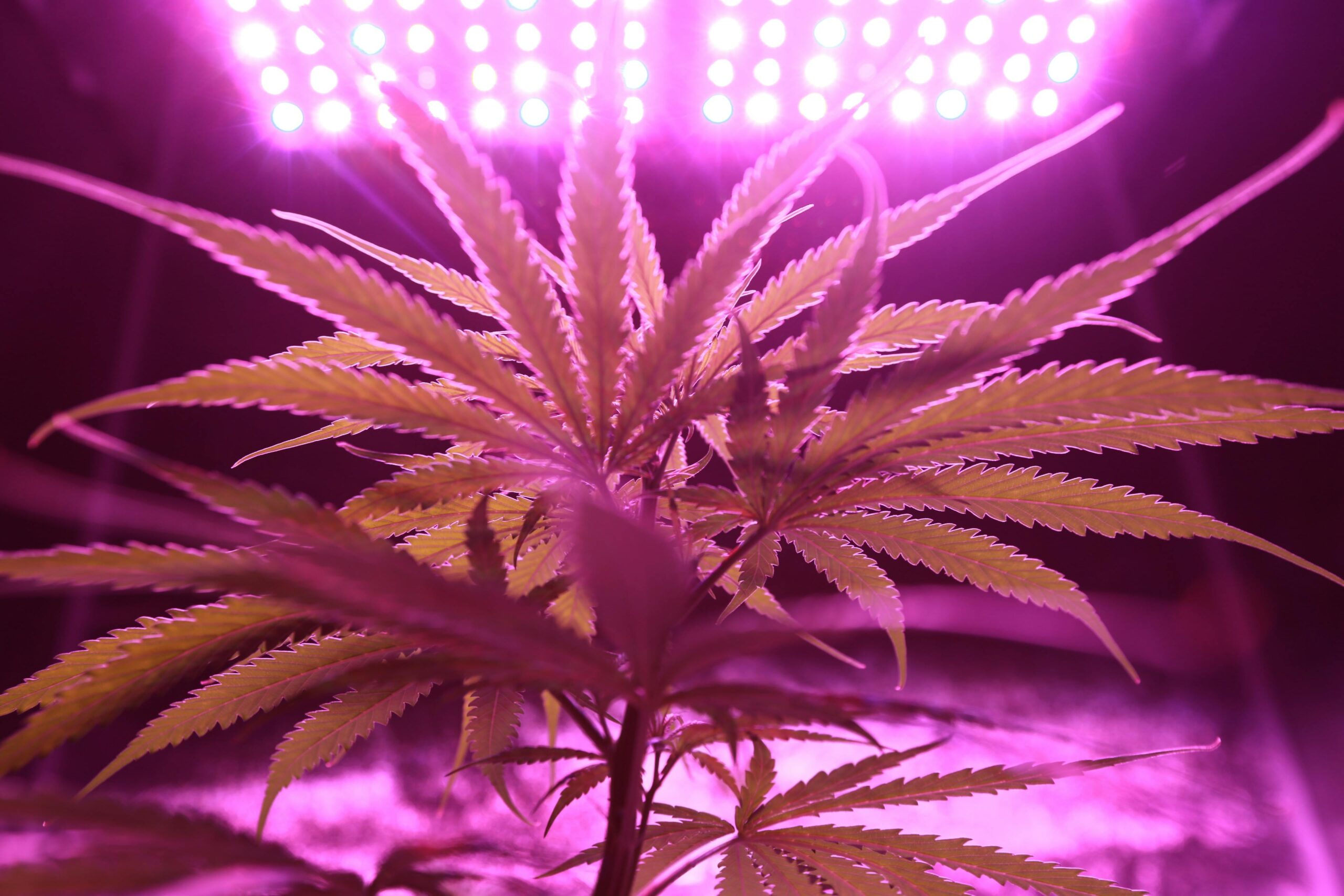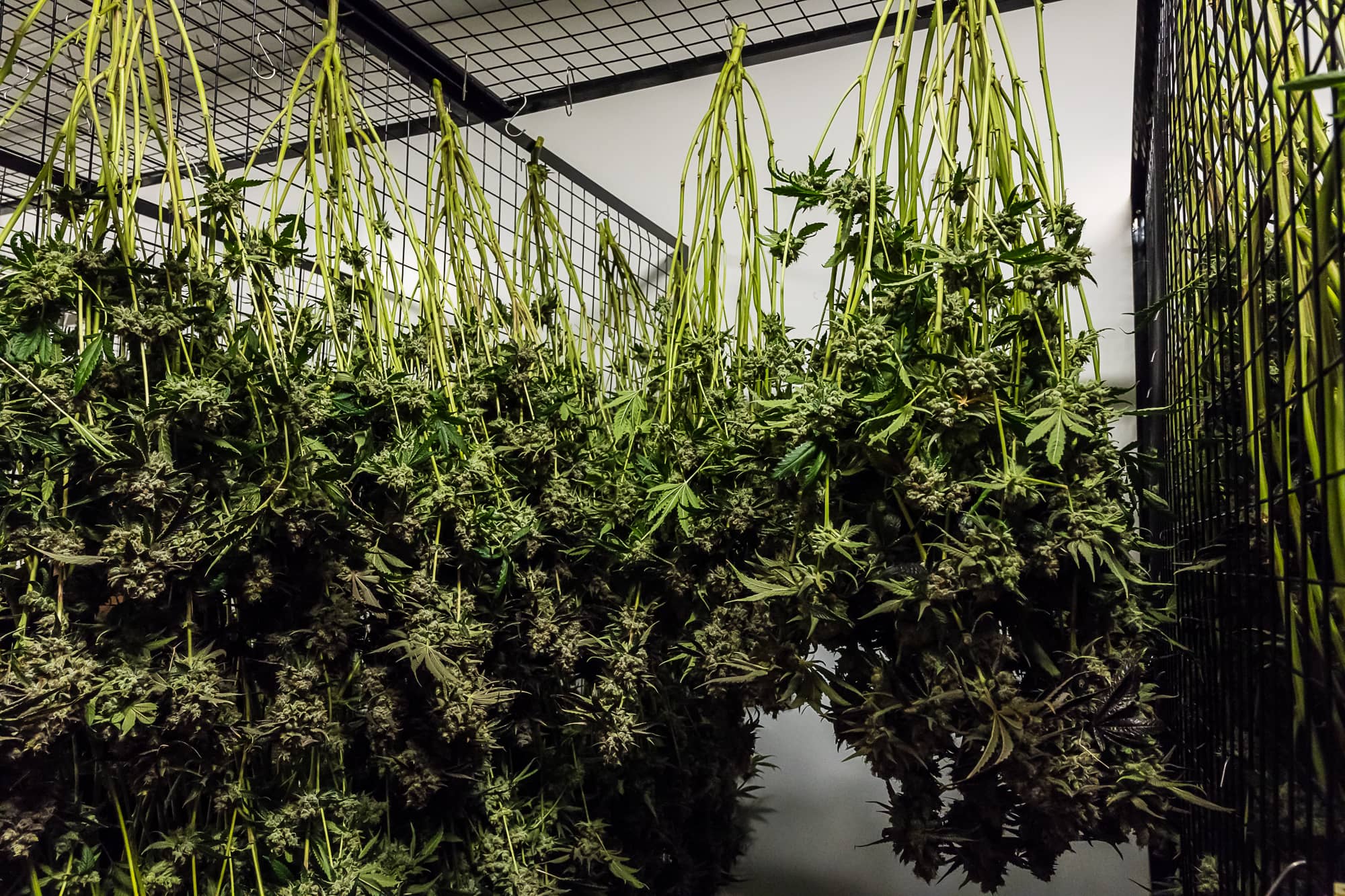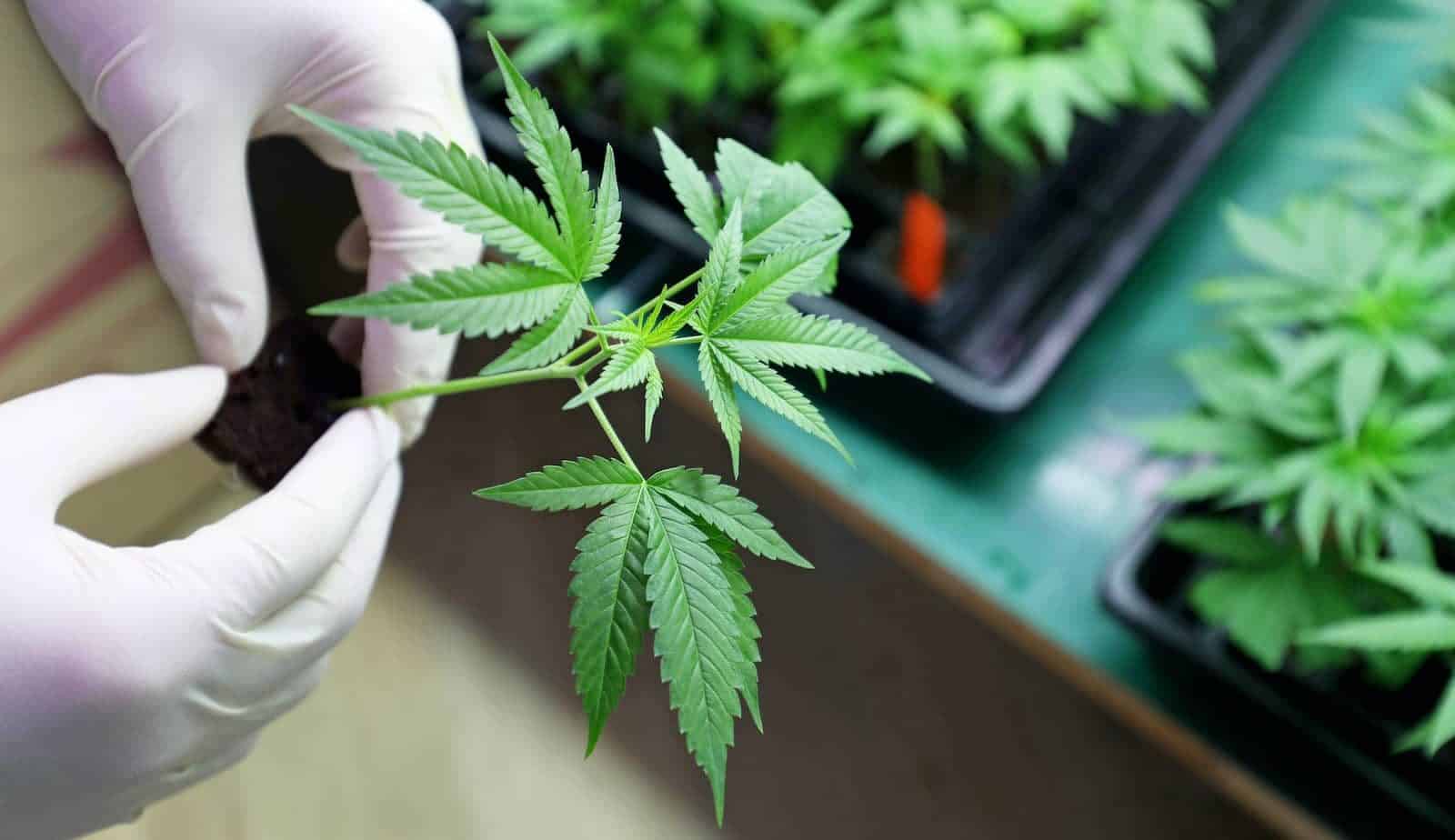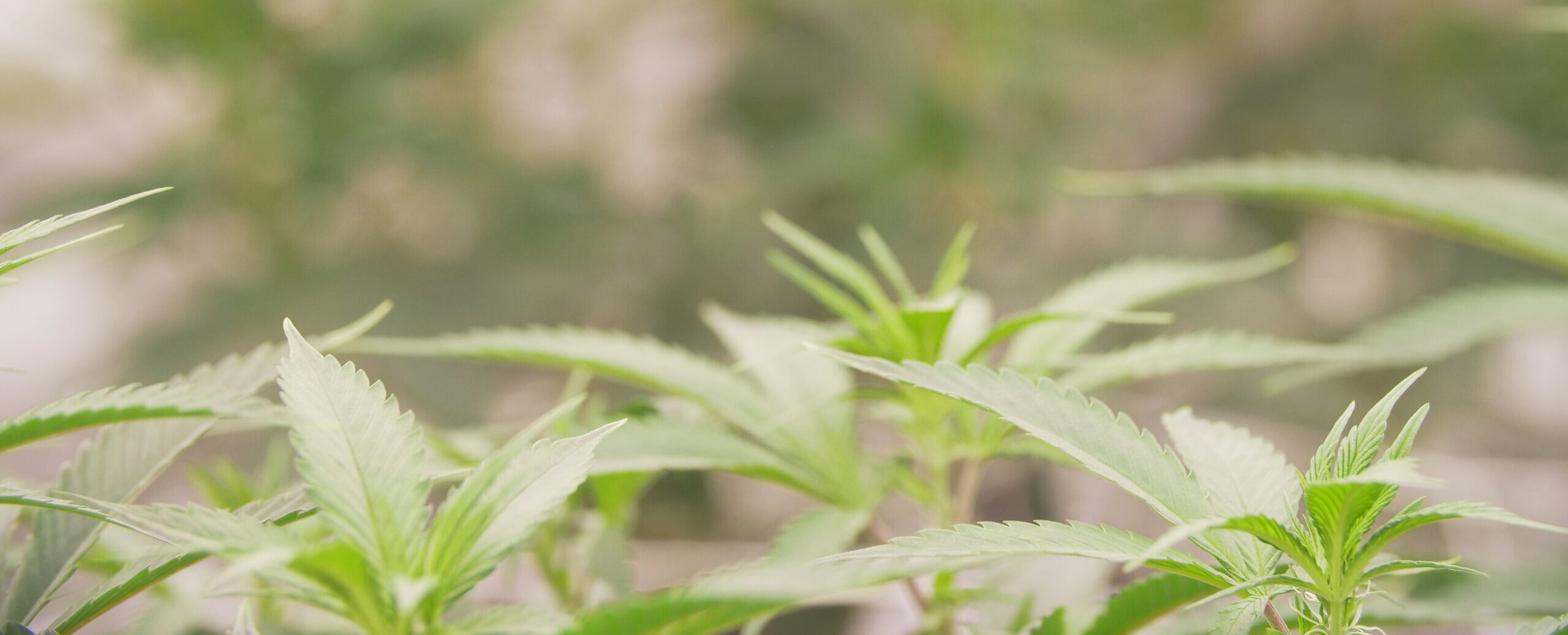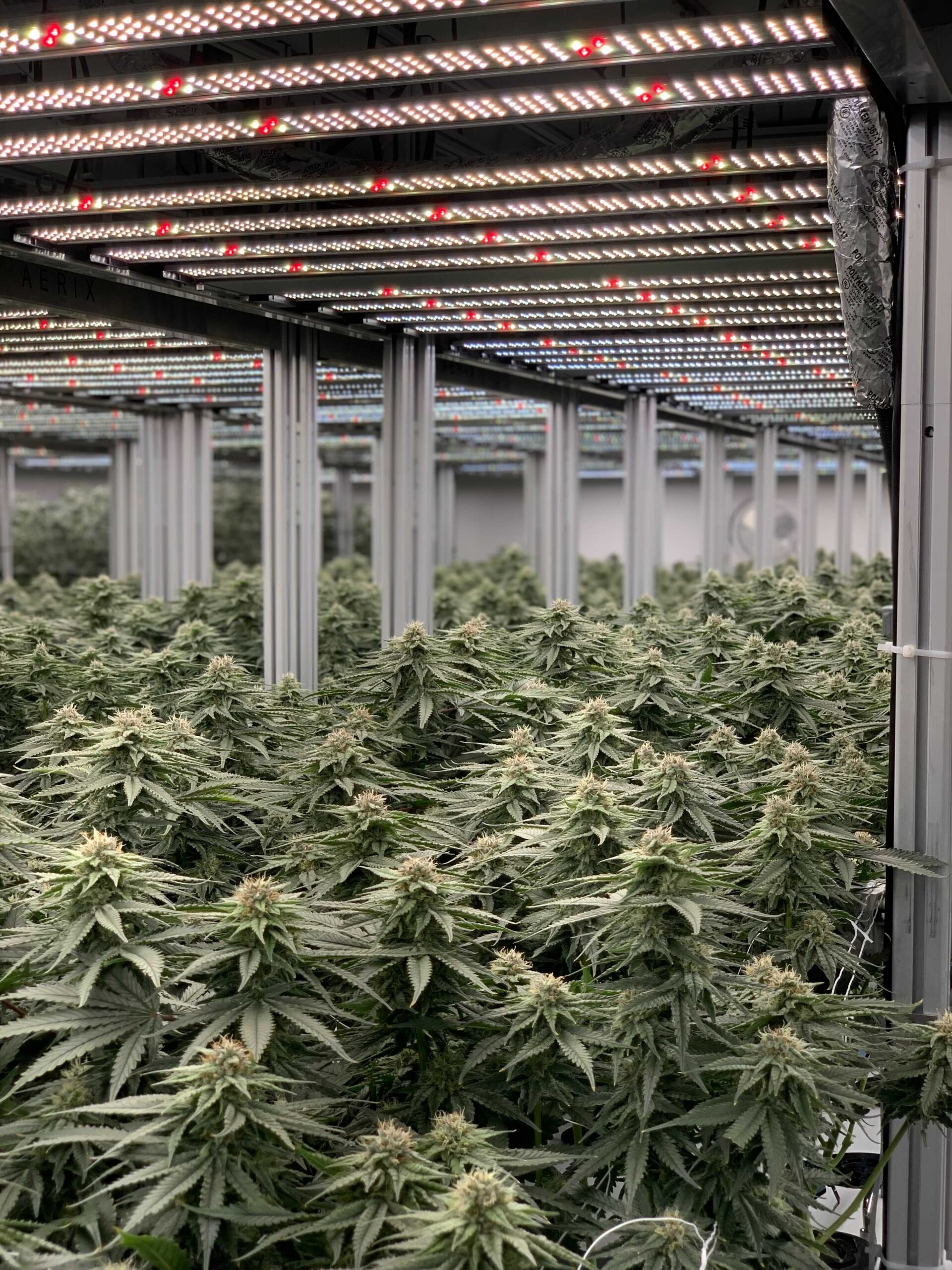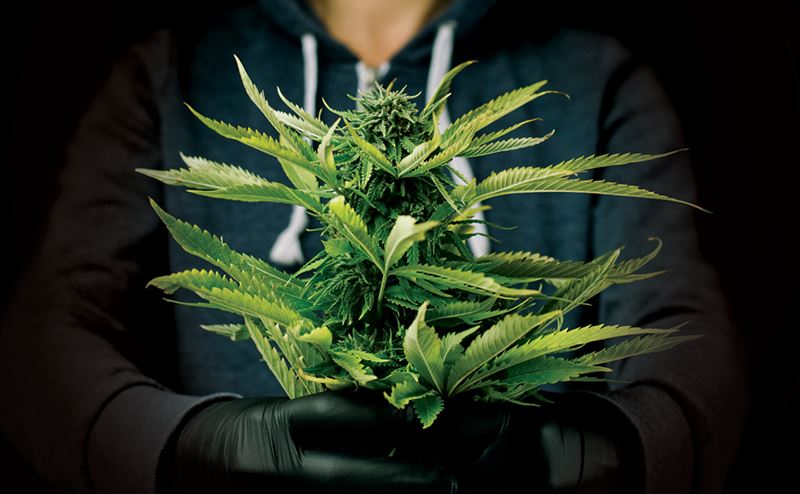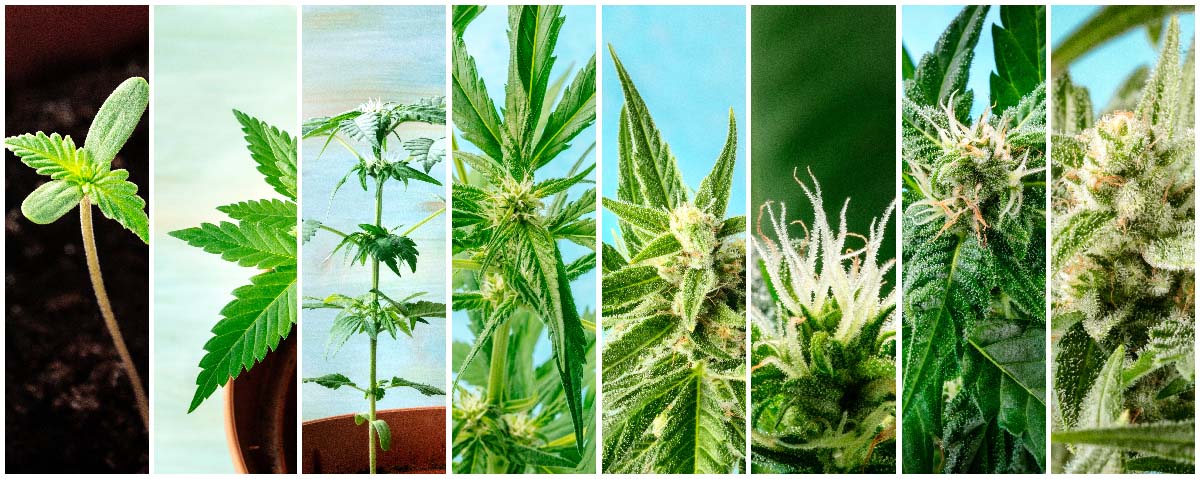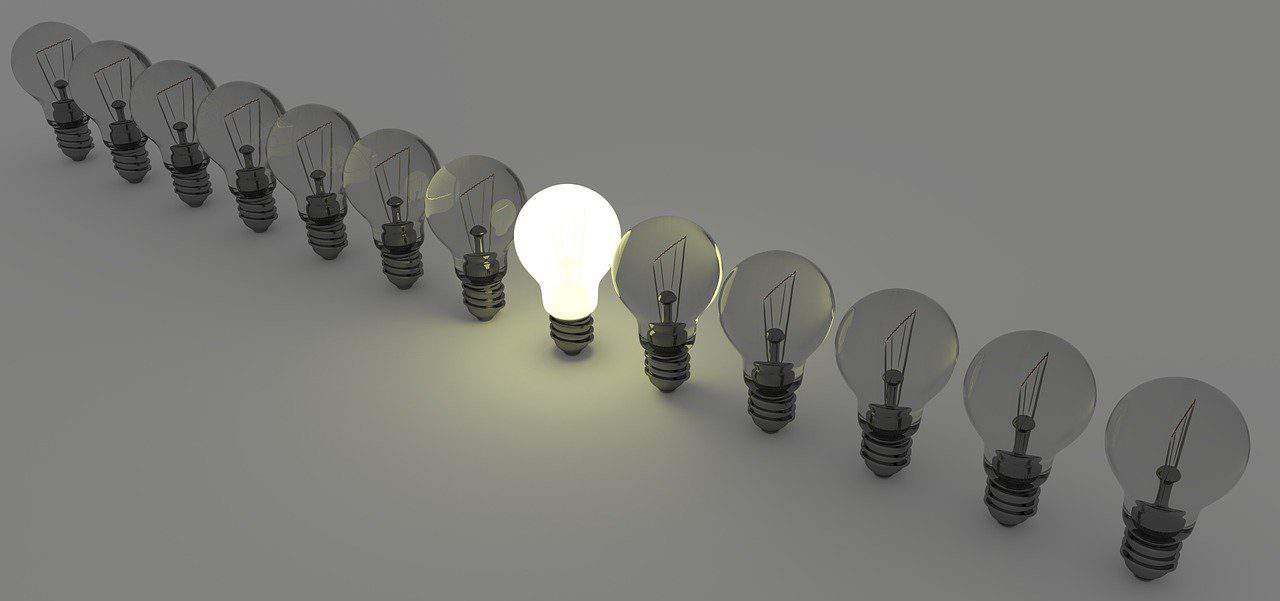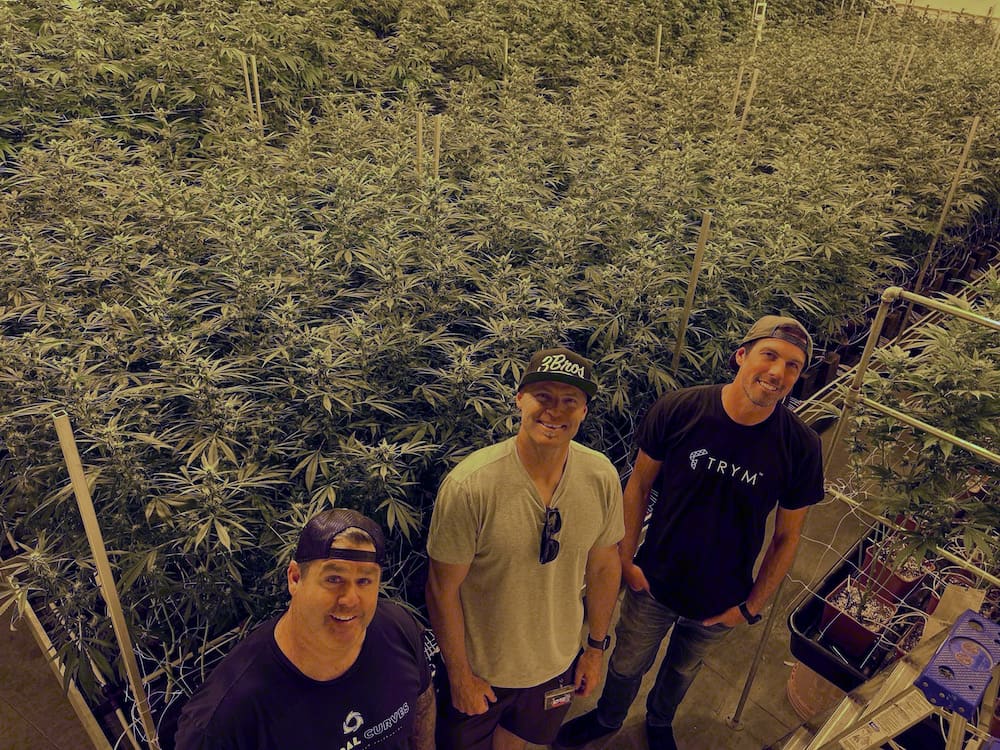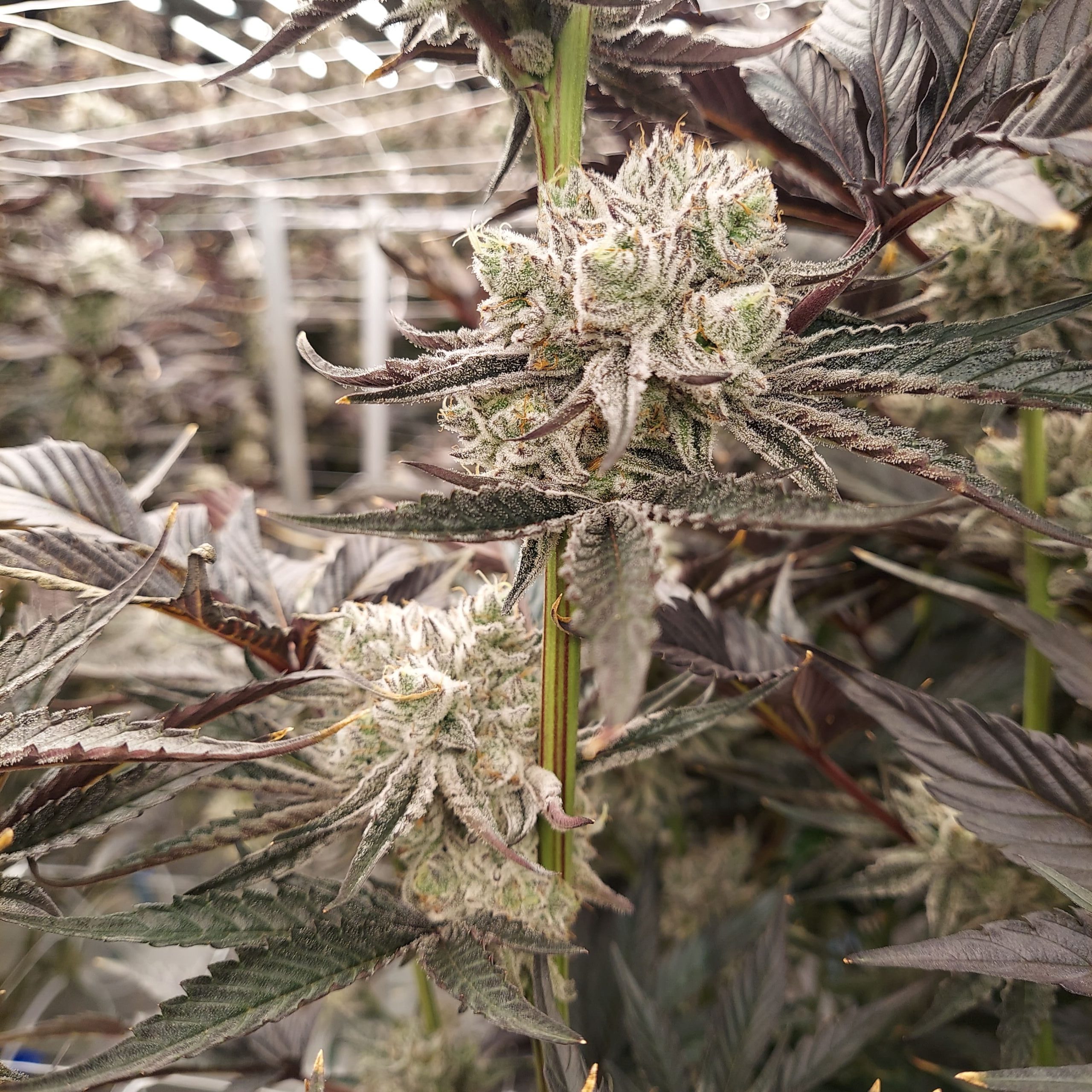Introduction
Whether you’re looking to up the ante in your grow room or perfect your crop steering techniques, this advanced guide on cannabis EC management is for you. By regularly measuring EC, nutrient levels and adjusting your irrigation strategy, you can gain enhanced control over your cannabis plants’ nutrition and development throughout their growth cycle.
Avoid mistakes and sharpen your skills with this guide on EC in cannabis cultivation. In this article, we’ll explain how and why to measure EC levels in your grow operation, how to adjust the levels as you grow, and the specific strategies to achieve optimal yields and quality.
Excerpts from our Crop Steering Guide are featured below. Download the full guide to go deeper.
What is nutrient lockout?
Nutrient lockout is one of the most common challenges cannabis growers deal with. Plants begin to look as if they’re starved for nutrients, but in fact, they simply are not absorbing nutrients properly. The optimal balance of pH, light, nutrients and environmental conditions will avoid nutrient lockout.
What is EC or Electrical Conductivity?
EC (Electrical Conductivity) measurements play a vital role in crop steering. Cannabis growers guide their plants through several growth cycles, by carefully monitoring EC levels in order to optimize nutrient uptake.
EC is measured as an electrical charge present in the water and represents the level of nutrient salts in the substrate. The type of cannabis nutrients used in fertigation systems are salt-based, non-organic solutions that can easily flow through the irrigation drip lines. These nutrients are referred to as ‘salts’ because they’re typically formulated from 6 commonly used water-soluble salts (ammonium, calcium and potassium nitrates, potassium and magnesium sulfates, and monopotassium phosphate (MKP). (Beard Bros) Nutrient solutions with a higher concentration of salts produce higher currents, which can be measured via electrodes on root zone sensors.
So what’s all the fuss about EC?
Closely monitoring EC readings can tell you a lot about a plant’s uptake of nutrients through the roots, given its stage of growth and time until harvest. The higher the salt concentration, the greater the EC level. Measuring the nutrient solution will help your cultivation team correct any wavering from the ideal EC range by adjusting the nutrient mix.
Since cannabis plants absorb nutrients through their roots, measuring the EC in the rootzone and in the run-off, or the water that drains from the substrate, can show how well the plants are absorbing their food. Issues with nutrient lockout or underfeeding can easily be detected with regular EC testing.
How to test and measure EC levels
There are two types of meters or conductometers available for measuring the EC level in a nutrient solution: pocket EC meters and continuous EC meters. The pocket version is exactly that, small and portable. However, for consistent, accurate measurements on a large scale, the continuous EC meter can attach to your reservoir and display the EC levels at any given time.
Sensors can be placed directly into the growing media to get real time readings from the rootzone. With Trym’s wireless sensors and software, you’ll get current and historical readings that allow you to adjust your irrigation strategy and adjust the EC as needed.
The scale used to measure EC is not universal. There are actually four common scales used today. Knowing which one your conductivity meter and nutrient solution goes by is important to taking and acting on measurements.
The four conductivity scales are:
- EC
- PPM (Parts per Million): EC x 700
- TDS (Total Dissolved Solids): EC x 500
- CF (Conductivity Factor): EC x 10
Cleaning and Calibrating Tips
EC measurements will not be accurate without a strict cleaning and calibration protocol. The risk of taking inaccurate measurements is that the adjustments you make to your feedings can ripple into severe problems down the road that are potentially irreversible.
The meters need to be checked regularly to make sure they’re not broken from the choppy waters the mixing pumps produce. And if you have multiple probes in a reservoir, make sure they’re not miscommunicating due to electrical impulses or interference.
Calibration
The EC meters also have to be recalibrated regularly using calibration fluid, that’s brand new each time. Don’t reuse the calibration fluid. Make sure that the probes are sterilized before putting them into the fluid for measurement. Similarly, keep the containers used to recalibrate as sterile as you can, rinsing with deionized water after calibrating. Finally, store the meters in a cool, dry place. Direct sun and high heat could affect their operability and accuracy.
Where to Measure EC
The simplest way to measure your EC is with a rootzone sensor and a handheld pen or probe. Here are the benefits of measuring conductivity in different locations:
At the dripper: after mixing all the nutrient products and balancing your pH level, take the EC measurement at the dripper to optimize the concentration of nutrients to feed the cannabis plants.

Root zone: since the cannabis plants absorb nutrients from the roots, measuring the EC in the root zone with a sensor allows real-time insight into the nutrient concentration in the growing media. Rootzone sensors also allow for the measurement of Water Content and temperature to further help you determine how to make adjustments to your irrigation strategy.
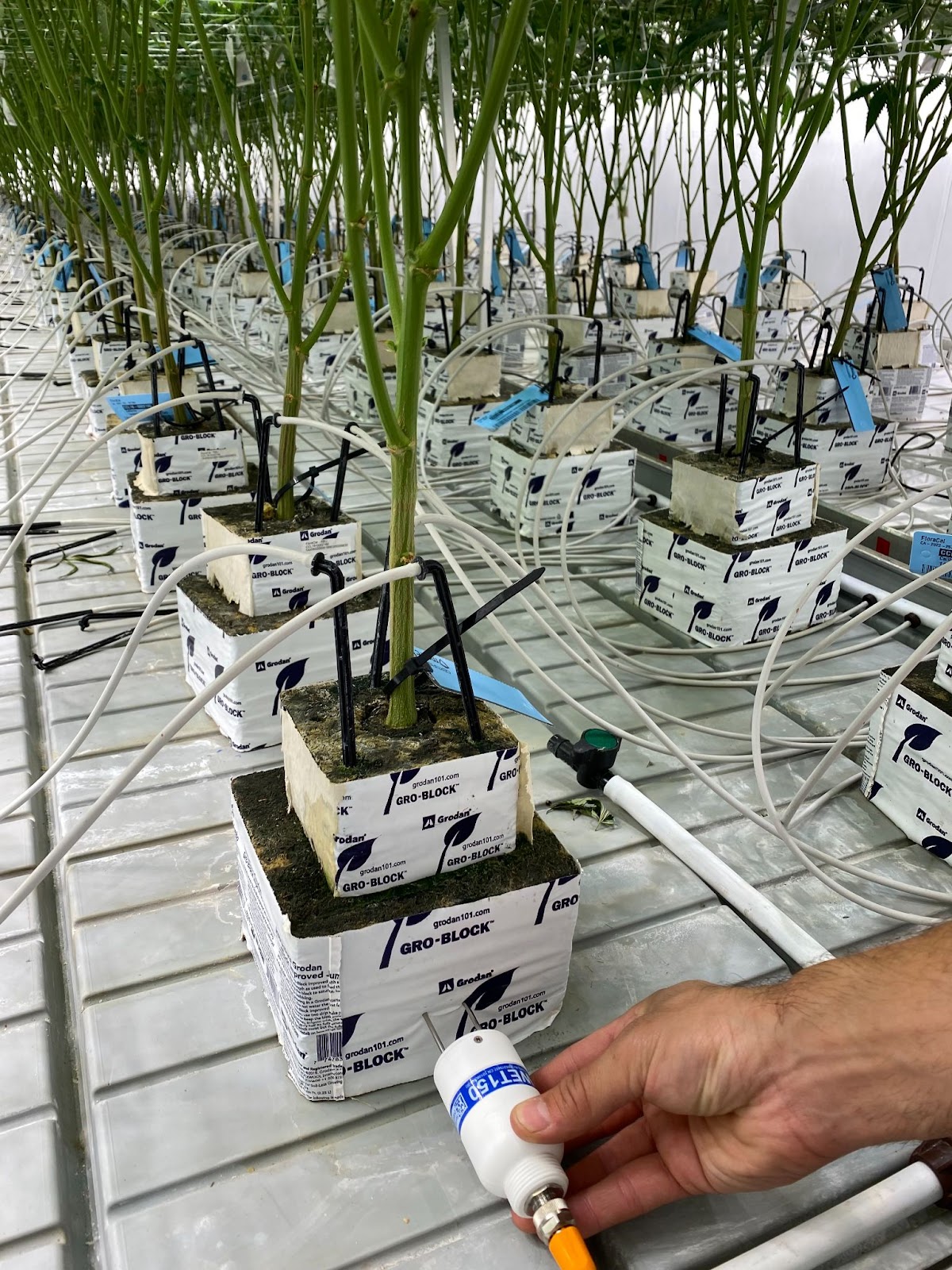
Another way to measure rootzone EC is the extract solution from the rootzone which can be sent to a lab for analysis of its exact makeup. ( can insert picture of extraction from rockwool) With organic substrate, like soil, we recommend performing a pour-through test to check EC in the growing media itself.
With organic substrate, like soil, we recommend performing a pour-through test to check EC in the growing media itself.
Tip on performing an accurate run-off test: 30 minutes after the feeding take 1-2 liters of 0.0 EC water, pour over the plant medium at random spots and catch the runoff with a clean dish. Then, measure the EC out of a clean shot glass, taking at least a 1 min reading.
Run-off: a reading of the nutrient solution that drains from the growing medium after a feeding is another great indicator of EC levels.
It’s recommended to measure the EC level after mixing the nutrients and again after the cannabis plants have been fed and the nutrient solution has drained out the bottom.
Water Quality
If your water is reading over 500 ppm, you’ll need to address it, as poor water quality will compete with and lock out the nutrients you want your cannabis plants to uptake. You’ll need to either recalculate the nutrient balance to adjust for hard water, for example, or treat the water through carbon filters, distillation, or reverse osmosis.
What should my EC runoff be?
The most important thing to know about EC is that if it’s not in the optimal range given the stage of growth, your cannabis plants can get locked out and won’t uptake nutrients efficiently. The answer of what EC measurements you should aim for depends on the climate conditions like light intensity, temperature, and humidity, type of plant you are growing, how the plant looks whether nutrient deficient or nutrient burn, current stage of growth (veg or flower), the EC of the applied irrigation solution, and the overall irrigation strategy.
Changes to the applied irrigation EC should not be based on substrate or runoff EC measurements alone. Decisions to change the EC of the application needs to be taken into consideration with the visual health of the plant, growth rate compared to previous crops, and the current climate conditions.
You should never “flush” with only fresh water without any nutrients as this can cause damage to the roots and further weaken the plant. Applying an irrigation without any nutrients will further compound nutrient deficiency caused by the root zone EC being too high or low. In most cases, high or low EC is caused by poor irrigation strategy, weak plant health, disease, the misapplication of nutrients, or ph imbalances. Chasing substrate EC alone can have serious, negative effects on plant growth and harvest yields.
Higher EC
In general substrate and drain EC can be much higher than you think. The charts below show examples of rootzone EC concentrations by light intensity for different vegetable crops. While the “perfect” EC varies for different stages of growth and different varieties of plants, in general, root zone EC can be 2 to 4+ EC in VEG and 4-10 in flower. It’s good to measure and record drain EC with the total drain volumes per day but drain EC alone should not be used to adjust the applied irrigation EC.
Below are example substrate EC levels for Tomato, Cucumber, and Pepper crops at different light intensities. For cannabis, it can be safely assumed that different cultivars born and bred under specific conditions will have variable EC requirements under different climate conditions.
Drain volume under various light intensities
Sometimes the cause of high EC in the rootzone or in the runoff could be that not enough runoff is being achieved on a daily basis for the climate conditions and the grower simply needs to add more irrigations to bring EC under control. Conversely, EC that’s too low can be a sign of too much irrigation and you’ll need to reduce irrigation frequency or volume to bring the EC into the desired range for the plants.
How to optimize and make adjustments
Optimizing the EC in the rootzone is typically done by adjusting the strength of the nutrient solution and the way in which you irrigate. Factors like the volume of solution being applied at each irrigation event, the frequency of irrigation events, and the start and stop times of irrigation in the plant’s day cycle are all important when considering strategies.
To better understand how to control EC in the rootzone you have to understand the behavior of WC and EC in the substrate. Many growers utilize a multi-phase irrigation schedule that was initially popularized by Grodan. A 24 hour cycle can be broken down into 4 irrigation phases.
Below, you’ll find charts straight from our Crop Steering Guide, which illustrate the relationship between EC and WC levels as the day progresses through each irrigation phase.
4 Irrigation Phases
Phase 0: Lights On to First Irrigation
Phase 1: First Irrigation to Runoff
Phase 2: Runoff to Last Irrigation
Phase 3: Last Irrigation to Lights On
Phase 0: Lights On to First Irrigation
After the lights are on in your room (sunrise), you should wait until your plants are actively transpiring before beginning irrigation for the day. You can verify that they’re transpiring by monitoring the water content (WC) in your substrate.
As the plants uptake water, the WC in the substrate will decline. You can use varying amounts of dry back from sunrise to your first irrigation in order to steer your plants vegetatively (1 – 4% dry back) or generatively (4 – 6% dry back).
Phase 1: First Irrigation to Runoff
Once your plants are actively transpiring, your plants are ready for the first irrigation of the day. The goal for this irrigation phase is to reach peak water content (WC) for the day and achieve runoff 1 – 3 hours after your first irrigation.
The number of irrigations required to produce runoff will vary depending on substrate size, starting WC, shot size, and irrigation frequency. Achieving a minimum of 1% dry back between each irrigation is ideal to ensure you’re not seeing runoff too quickly.
If you’re steering more generatively and are applying a larger irrigation shot (6%+), you should aim for a longer dry back of 2% – 3% between feedings to avoid hitting peak WC too early and creating excess drain.
Phase 2: Runoff to Last Irrigation
During this phase the goal is to reduce EC to its lowest daily value while light intensity and temperature are at their highest, These conditions require your plants to work their hardest and typically correspond with the midpoint of the day.
Since you’ve already achieved your desired WC and first drain in Phase 1, during this phase you can tailor the volume and frequency of irrigations to hold WC consistent in your substrate. You can do this by reducing your shot size and adjusting the dry back between shots. You should aim for at least 1% to 3% dry back between each shot if steering more vegetatively. If steering more generativity you should target 3%-6% dry backs during this phase.
Phase 3: Last Irrigation to Lights On
It’s important that you time the last irrigation of the day so that you allow adequate time for proper overnight dry back. Depending on the stage of growth, you should aim to achieve 2% to 6% dry back between the final irrigation and lights off (sunset). If steering vegetatively, you should target dry back from the last irrigation of the day until the first irrigation of the following day between 10% to 15%. For generative, aim for 20 – 30% or more.
What should my EC be in Veg?
EC in Vegetative Growth
Conditions that favor vegetative growth include lower electrical conductivity (EC), higher water content (WC), lower vapor pressure deficit (VPD), lower light intensity, and an overall stress-free environment.
The following ranges are examples of conditions that could induce vegetative growth. Actual conditions will vary by grow environment and cultivar. It’s critical that you adapt your climate and irrigation strategy to your specific environment and genetics by combining experimentation of steering actions with regular data collection and analysis.
From our official Crop Steering Guide:
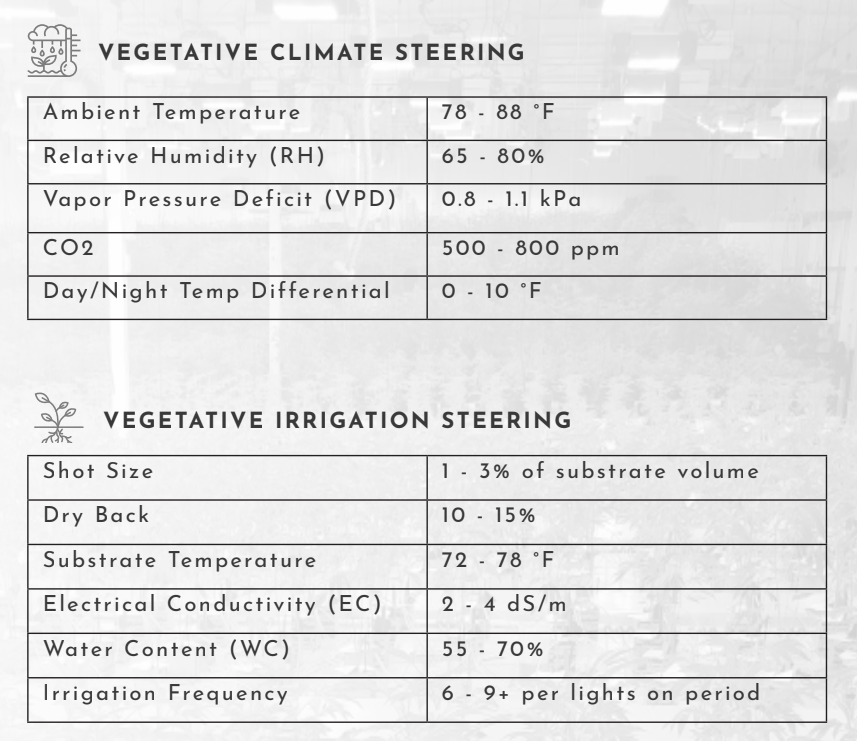
What should my EC be in flower?
EC in Generative Growth
In generative growth, the plant’s energy is directed toward creating flowers. With this focus on flower production, the plant slows down the growth of new foliage and reduces stretching. Generative growth cues can be leveraged throughout the plant’s lifecycle, not just in the flowering period. For instance, if you have plants that are demonstrating signs of excessive vegetative growth, such as stretching too much with larger internodal spacing, then you can modify your climate and substrate to steer your plants to grow more generatively.
What happens if EC is too high?
There are several reasons why you might have built up too high of an EC in the rootzone. First, the applied irrigation solution EC is too high for the plant or the climate conditions are too intense. If the plants are in a hot and humid environment, they will uptake more water than nutrients compared to a plant that’s under lower light and milder temperature conditions.
Channeling
Not achieving enough drain per day can lead to increased EC in the rootzone and higher EC values in the run off. Channeling of irrigation solution can occur when large volumes of solution are applied to the growing media, specifically when the nutrient solution is more than 10% of the total substrate volume.
Channeling prevents the growing media from fully re-saturating because the water passes through the media without having a chance for it to be absorbed by the substrate. The growing media becomes drier over time thereby increasing EC. Issues with plant health like diseases or reactions to stressful events like drought or climate issues, can cause EC to also build up in the rootzone. Finally imbalances in nutrient solution can lead to toxic salt buildup of certain elements in the rootzone, preventing the proper uptake of nutrients in general.
Effects of high EC on the plant
Some common issues associated with high EC include reduced water uptake, closing of stomata and less growth. Stems will look stronger and leaves turn a darker shade, as the percentage of dry matter increases. High salinization in the substrate, however, can lead to root burning, salt damage, leaf burn, and signs of toxicity. Excess precipitation of nutrient salts in the drip solution can lead to blockage in the irrigation system which can cause complete failure of the drippers.
How to correct high EC
Any corrective actions you choose to take should be in response to the initial cause of high EC. If your applied EC is too high, reduce drip EC by 0.5 mS/cm (per day). Dropping EC too fast or going too low can weaken the plant and damage the rootzone.
If you believe that high EC is caused by too little irrigation, ensure the irrigation strategy achieves drain on time (usually by late morning or noon) and supplies the correct amount of water throughout the day. Apply more irrigations per day to achieve more drain, but ensure each irrigation is between 3% total 8% of the substrate volume.
If you believe you have toxic build up in the rootzone flush with a large amount of lower strength nutrient solution (0.5 EC lower than your target feed EC) directly to the rootzone using a watering wand.
What happens if EC is too low?
There are several reasons EC might be low in the rootzone. First, applied EC is too low for the plant and growing conditions. In mild conditions and with lower light intensity, like under LEDs, plants may require higher EC values than those grown under high light intensity with higher temperatures.
Additionally, too much drain per day can reduce the amount of EC that’s held in the rootzone, leading to overwatering and weakened plant health. Finally, the plants may just be consuming more nutrients than they’re being provided.
Effects of low EC on the plant
Low EC poses numerous potential issues that vary by climate and cultivar. In some cases, low EC can stimulate vegetative plant development, delaying flowering onset, and changing the appearance of the flowers. Low EC can also be responsible for lower density in flowers and increased risk of bud rot or disease. Lower EC values also contribute to reduced flower quality and final, dry weight of flowers.
How to correct low EC
If you believe the EC you’re feeding with is too low, you can simply increase drip EC by a maximum 0.5 mS/cm per day. We recommend small changes to prevent further stress on the plant due to an accidental over-correction.
If you believe you are over watering or maintaining too high of WC in the rootzone for the cultivar or climate condition, you should work to decrease rootzone WC, but do not stop irrigating. This can be accomplished by gradually removing irrigation events from the end or by delaying the start of irrigation at the beginning of the day until the desired EC, WC and runoff volumes are achieved. Also aim to achieve drybacks of at least 1% between each irrigation when building up WC and 3%-6% once you have hit peak WC.
Conclusion
In conclusion EC in the rootzone and in the drain is influenced by the irrigation strategy in concert with the environmental conditions and the cultivar you are growing. EC readings from the drain can differ from the substrate EC. So it is important to take readings directly from the rootzone as well before making any decisions to adjust the irrigation strategy or applied EC strength. EC in the rootzone can be adjusted by changing the frequency of irrigation, amount of irrigation applied per irrigation event, and when you start and stop irrigation. Using a Trym realtime rootzone monitoring system with historical data can help you catch rootzone issues quickly and help you fine tune your ideal EC for your plants.

